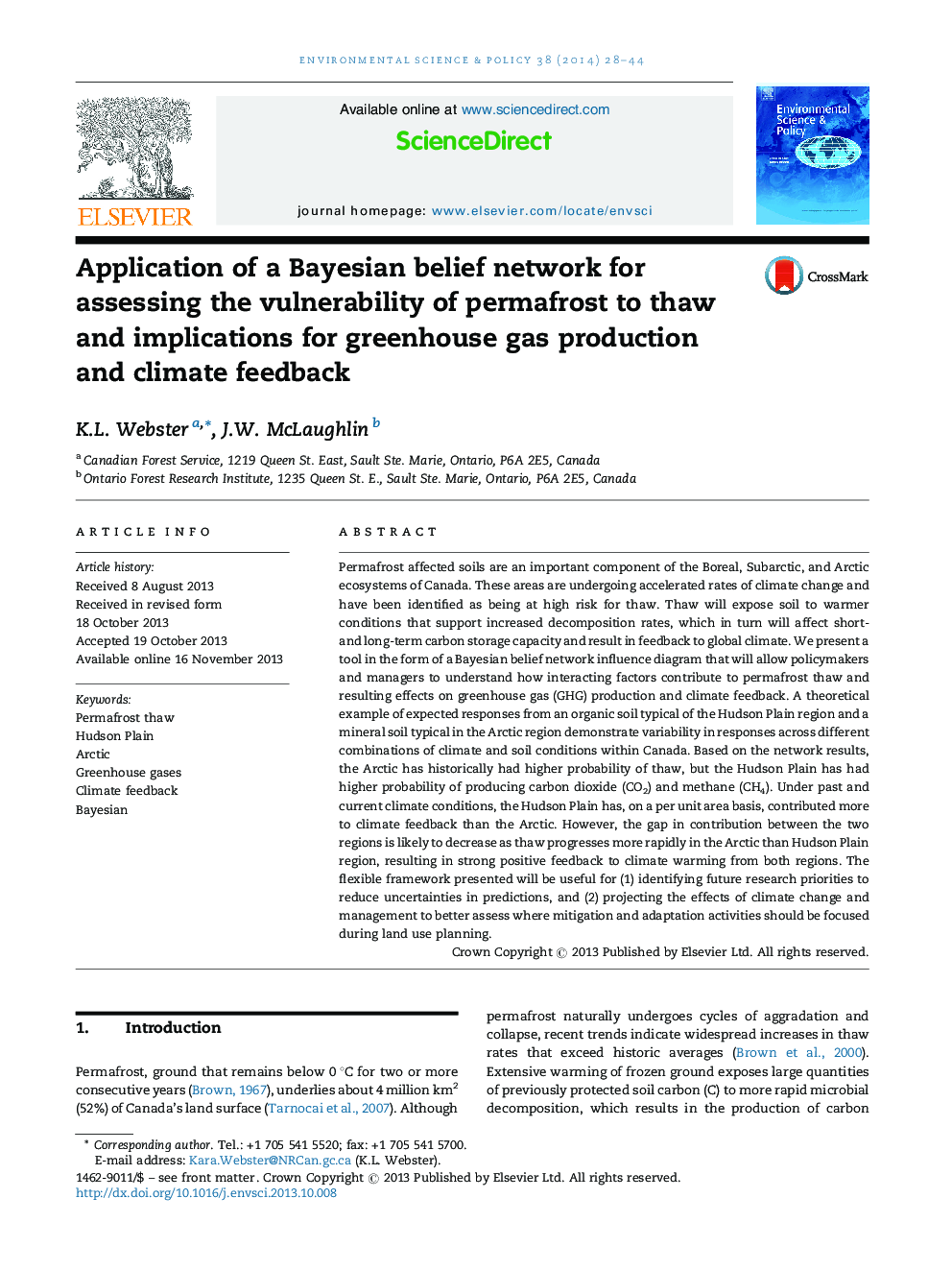| Article ID | Journal | Published Year | Pages | File Type |
|---|---|---|---|---|
| 7467916 | Environmental Science & Policy | 2014 | 17 Pages |
Abstract
Permafrost affected soils are an important component of the Boreal, Subarctic, and Arctic ecosystems of Canada. These areas are undergoing accelerated rates of climate change and have been identified as being at high risk for thaw. Thaw will expose soil to warmer conditions that support increased decomposition rates, which in turn will affect short- and long-term carbon storage capacity and result in feedback to global climate. We present a tool in the form of a Bayesian belief network influence diagram that will allow policymakers and managers to understand how interacting factors contribute to permafrost thaw and resulting effects on greenhouse gas (GHG) production and climate feedback. A theoretical example of expected responses from an organic soil typical of the Hudson Plain region and a mineral soil typical in the Arctic region demonstrate variability in responses across different combinations of climate and soil conditions within Canada. Based on the network results, the Arctic has historically had higher probability of thaw, but the Hudson Plain has had higher probability of producing carbon dioxide (CO2) and methane (CH4). Under past and current climate conditions, the Hudson Plain has, on a per unit area basis, contributed more to climate feedback than the Arctic. However, the gap in contribution between the two regions is likely to decrease as thaw progresses more rapidly in the Arctic than Hudson Plain region, resulting in strong positive feedback to climate warming from both regions. The flexible framework presented will be useful for (1) identifying future research priorities to reduce uncertainties in predictions, and (2) projecting the effects of climate change and management to better assess where mitigation and adaptation activities should be focused during land use planning.
Related Topics
Physical Sciences and Engineering
Energy
Renewable Energy, Sustainability and the Environment
Authors
K.L. Webster, J.W. McLaughlin,
